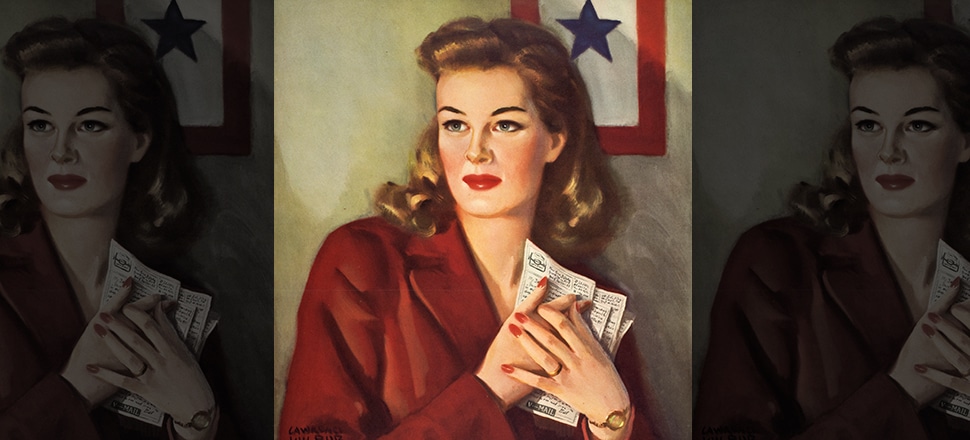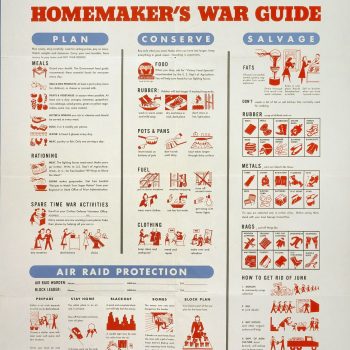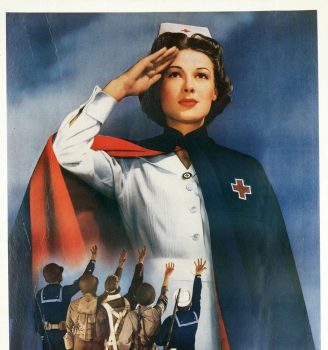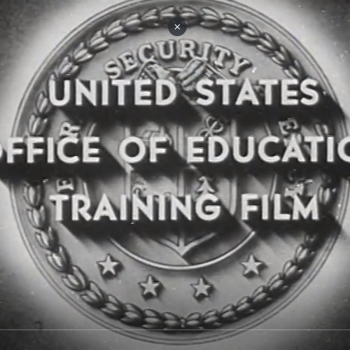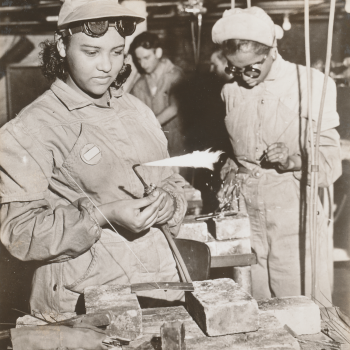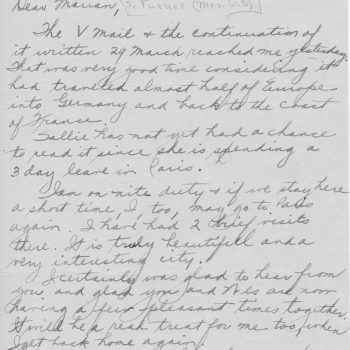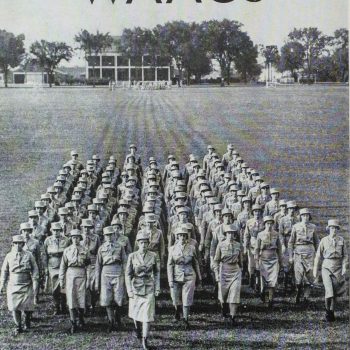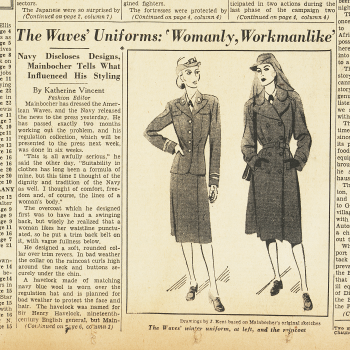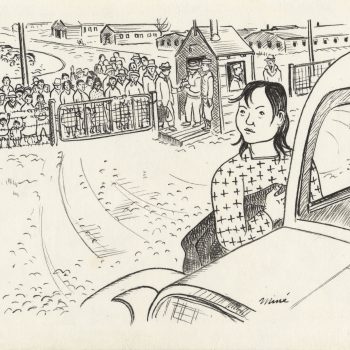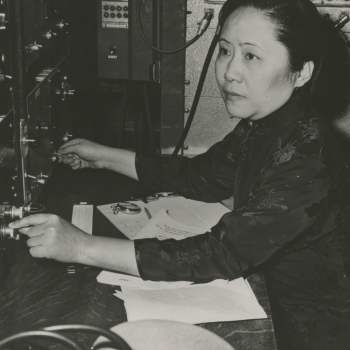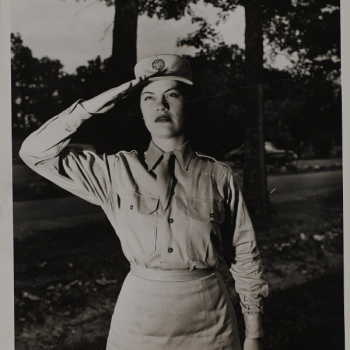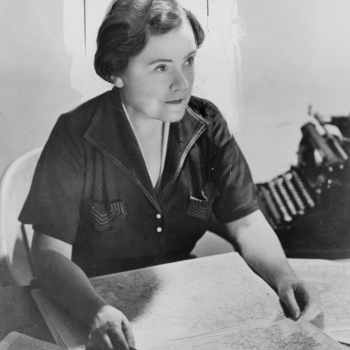Key Ideas
1. From the home front to the warfront, women were critical participants in World War II.
2. War work and military service provided women with new opportunities and improved access to higher pay and skills training.
3. The federal government provided opportunities for women of color to participate in the military and war work facilities, although those experiences did not always guarantee racial equality in the workplace.
4. America struggled to guarantee freedom and equality at home while promoting these ideals overseas.
Introduction
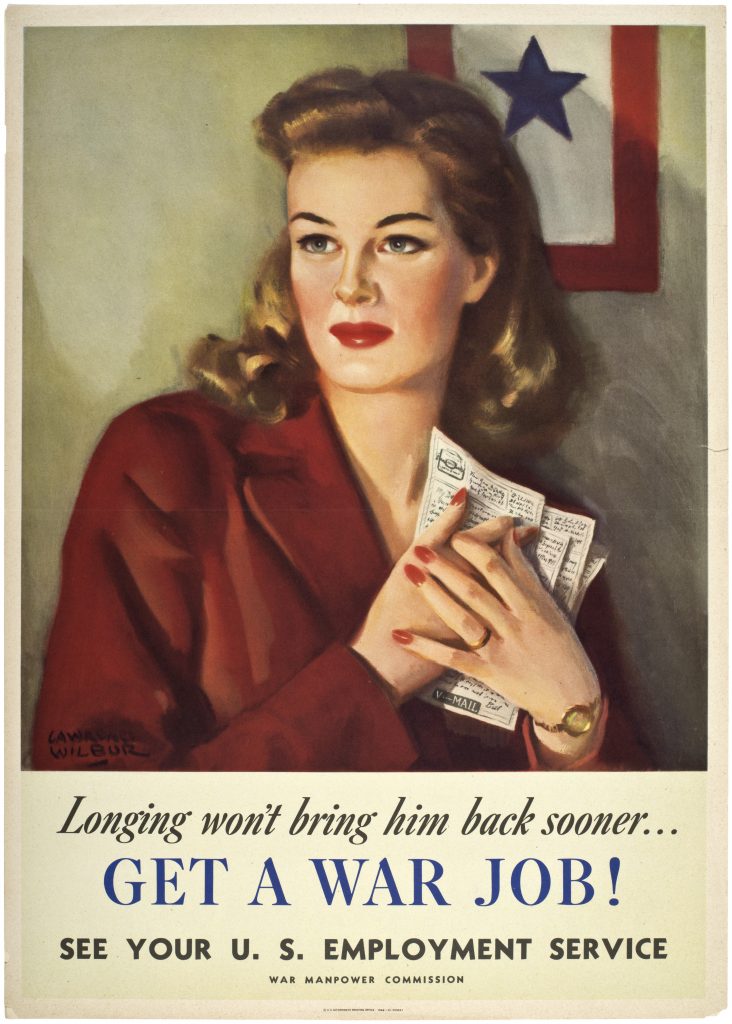
Lawrence Wilbur; U.S. Government Printing Office, Longing Won’t Bring him back sooner… Get A War Job! See your U.S. Employment Service. War Manpower Commission. 1944. New-York Historical Society Library.
World War II
As soon as America entered World War II, the lives of all Americans changed.
The country had never mobilized so quickly or on such a massive scale. Mass mobilization required women to actively commit to fulfilling their patriotic duty on a daily basis.
Over 6 million women entered the workforce for the first time during World War II. Civilian jobs for women included almost everything – office work, manufacturing, computer programming, journalism, nursing, scientific research, and more. Any man who could fight in the war was expected to do so, and his job was often temporarily filled by an able-bodied woman. Even the military officially opened its doors to women. WAACs (Army), WAVES (Navy), and WASPS (Air Force) attended boot camp, donned uniforms, and served in the armed forces in the United States and abroad.
Section Essential Questions
1. In what ways did women contribute to World War II? How did age, race, ethnicity, and geography influence the opportunities available to women?
2. What motivated women to participate in the war and what do these motivations say about the hopes, dreams, and ideals of American women across diverse backgrounds?
3. What new opportunities were available to women during the war? Why is this significant?
4. How did Japanese American women experience the war? How does the history of Japanese internment influence the greater narrative of World War II?


